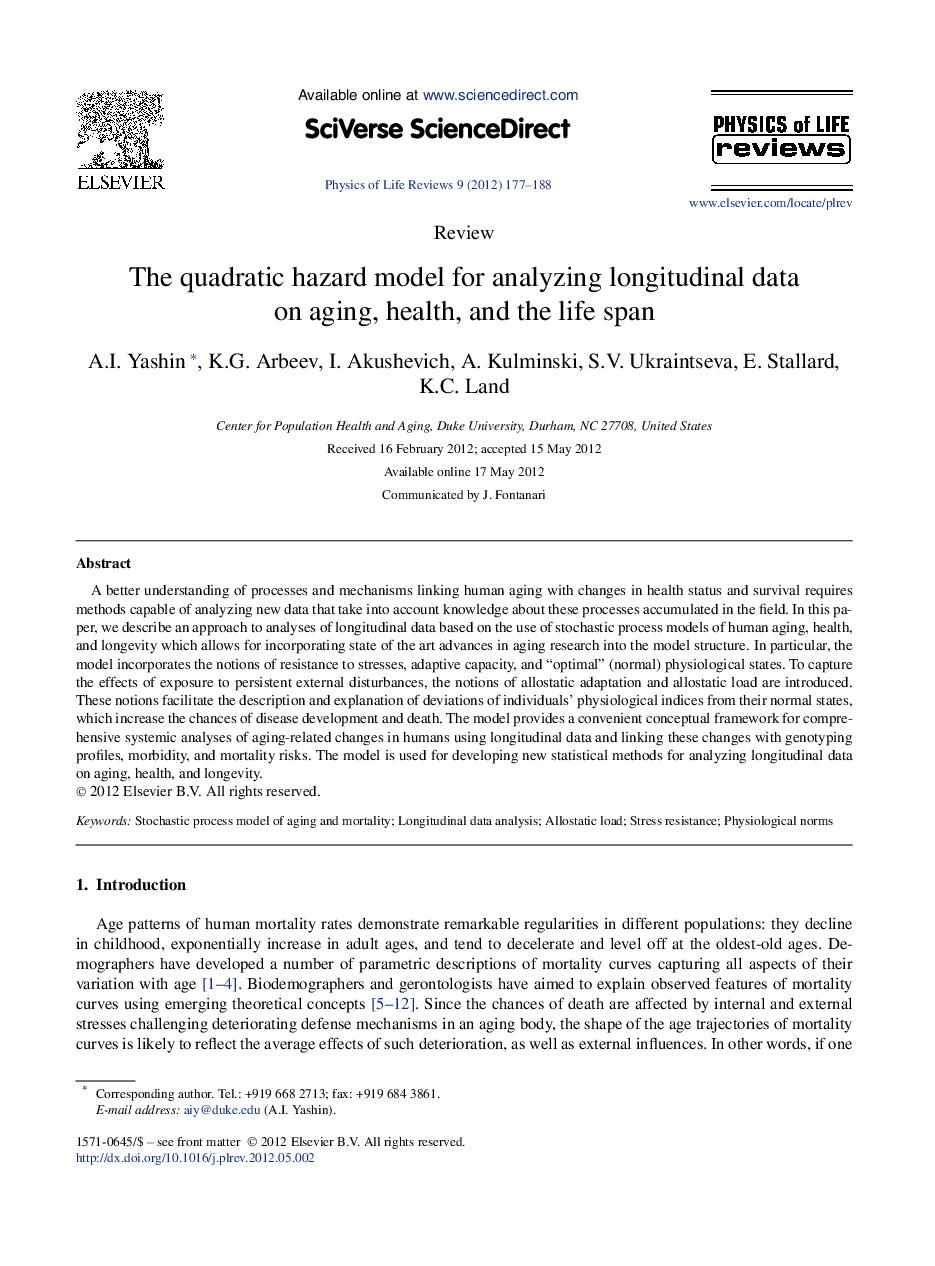| Article ID | Journal | Published Year | Pages | File Type |
|---|---|---|---|---|
| 1868639 | Physics of Life Reviews | 2012 | 12 Pages |
A better understanding of processes and mechanisms linking human aging with changes in health status and survival requires methods capable of analyzing new data that take into account knowledge about these processes accumulated in the field. In this paper, we describe an approach to analyses of longitudinal data based on the use of stochastic process models of human aging, health, and longevity which allows for incorporating state of the art advances in aging research into the model structure. In particular, the model incorporates the notions of resistance to stresses, adaptive capacity, and “optimal” (normal) physiological states. To capture the effects of exposure to persistent external disturbances, the notions of allostatic adaptation and allostatic load are introduced. These notions facilitate the description and explanation of deviations of individualsʼ physiological indices from their normal states, which increase the chances of disease development and death. The model provides a convenient conceptual framework for comprehensive systemic analyses of aging-related changes in humans using longitudinal data and linking these changes with genotyping profiles, morbidity, and mortality risks. The model is used for developing new statistical methods for analyzing longitudinal data on aging, health, and longevity.
► An approach to analyses of longitudinal data on aging, health, and longevity. ► Stochastic process models of human aging, health, and longevity is suggested. ► Incorporating state of the art advances in aging research into the model structure. ► Model deals with resistance to stresses, adaptive capacity, and physiological norms.
